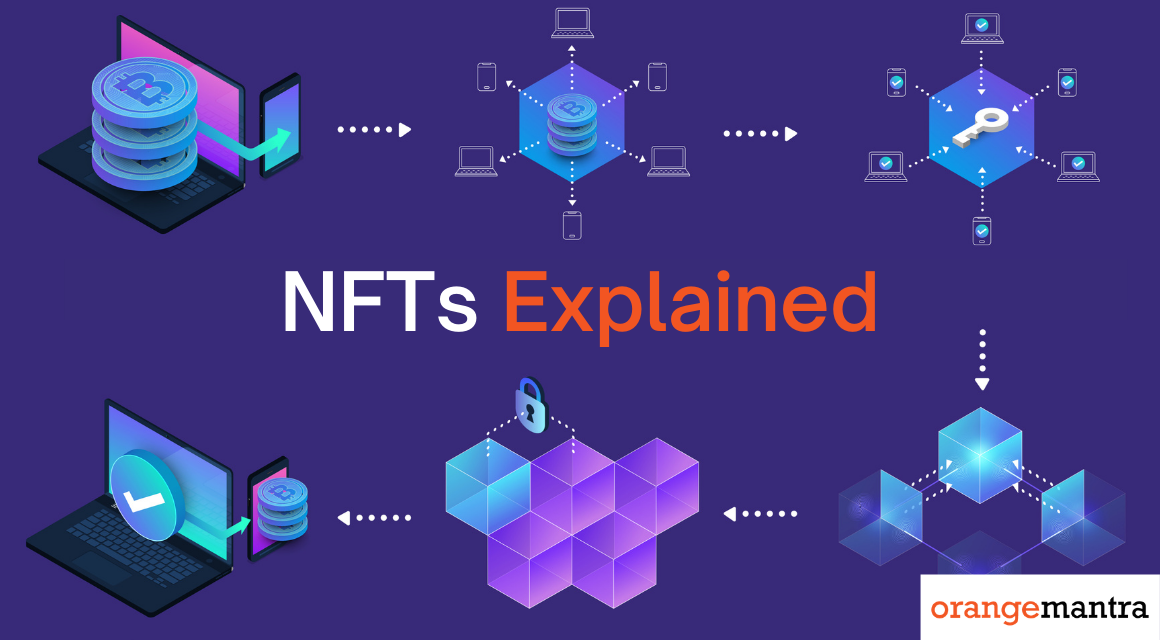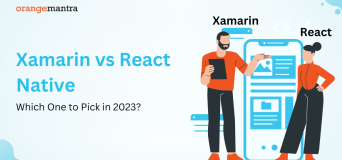It seems art markets and investors in western countries are rushing to create a novel digital currency boom. If you follow the global news, you must have seen – or overlooked – the buzz about NFTs. Non-fungible tokens and blockchain technology has taken the art world by storm. For instance, the musical band Kings of Leon released their new album “When You See Yourself” in the form of a non-fungible token.
But why are so many art enthusiasts and investors talking about NFTs? And what’s prompting a sudden appetite for digital art and currencies? Those are the things we try to explain in this post. These trends are also reshaping blockchain development and related technologies. Read on to learn exciting things about the new world driven by “everything digital.”
How NFTs Are Redefining Cryptocurrencies
What is a Non-Fungible Token?
A non-fungible token is a digital asset verified using blockchain technology. It relies on a network of computer-recorded transactions, giving buyers proof of authenticity and ownership. The current NFT boom mainly comprises digital assets, including GIFs, images, songs, and videos.
One thing that makes NFTs fascinating is the fact that they make artworks unique, hence sellable. Besides, NFTs are heavily relying on cutting-edge blockchain development capabilities. Buoyed by these technological advancements, NFTs are dominating the world of art.
Artists, musicians, art collectors, and journalists alike are using NFTs to monetize their digital assets. For example, a New York Times journalist turned an article about NFTs into an NFT. Then he put it up for auction. Someone paid $69 million for the digital file that anyone can view online — for free!
How do NFTs Work?
As mentioned earlier, most NFTs are part of the Ethereum blockchain. Ethereum is a cryptocurrency, like bitcoin. But its blockchain also supports NFTs, which store additional information that makes them work differently from other digital currencies. Do keep in mind that other blockchains can implement their own versions of NFTs.
When did NFTs Become a Buzz?
The technology that makes NFTs have been around since the mid-2010s. But it went mainstream in late 2017 with CryptoKitties, a site that allowed people to buy and “breed” limited-edition digital cats with cryptocurrency.
With the value of cryptocurrencies soaring consistently, some of the investors are trading NFTs for overwhelming prices. For instance, the American digital artist Beeple became the most high-profile NFT trader. Now a growing number of artists, collectors, and illustrators are selling their work for high-price NFTs.
How Big is the NFT Market?
The value of the NFT market grew by 299% in 2020, according to the NFT Report 2020 published by L’Atelier BNP Paribas and Nonfungible.com (source: The New York Times). The NFT market was valued at over $250 million. And as many of us know, the first few months of 2021 have already seen staggering NFT sales.
What Makes NFTs so Popular?
Tech experts agree that some of the NFT buzzes are just another hype. They argue the cryptocurrency world is plentiful of get-rich-quick tricksters and scammers. Another group of NFT detractors points to the enormous amounts of energy and computing power that NFTs and other cryptocurrencies need to work. They say it’s an environmental hazard.
And despite all of these, some things make NFTs so fascinating among many. Since the dawn of the internet era, artists have struggled with the fact that making copies of digital artworks is incredibly easy. The inherent scarcity that makes physical art forms valuable was hard to replicate in the digital universe. Not anymore. And that’s what makes NFTs so popular, more than anything else.
Using blockchain development, NFTs create ownership of digital artworks. Blockchain technology makes it possible to mark digital goods with cryptographic markers of authenticity. That way the owner can keep a permanent record of its ownership. You can copy the entire file contained in an NFT, but you can’t fake the digital signature behind it.
And that’s not all. Digital art creators can even attach a royalty agreement to their NFTs. They could entitle the digital assets to a cut of the profits every time their works are resold.
What Does the Future of NFTs Look Like?
The short answer is it’s hard to tell. Predicting technologies that will succeed is an incredibly uncertain business. Most digital tech observers, including this author, are cautiously optimistic about NFTs. They undoubtedly present an innovative and tech-enabled way for creative people to make a living on the internet.
Traditional media companies for decades have avoided internet-based distribution methods as they see them as a threat to their business models. And that’s often true. Most things on the internet are free. The ones that are not can be easily copied or pirated.
Existing models like digital subscriptions to take control over their assets. NFTs could be another way that relies on digital transformation solutions and techniques. This innovative method could enable artists, musicians, and collectors to turn artworks into one-of-a-kind collectible digital assets.






















